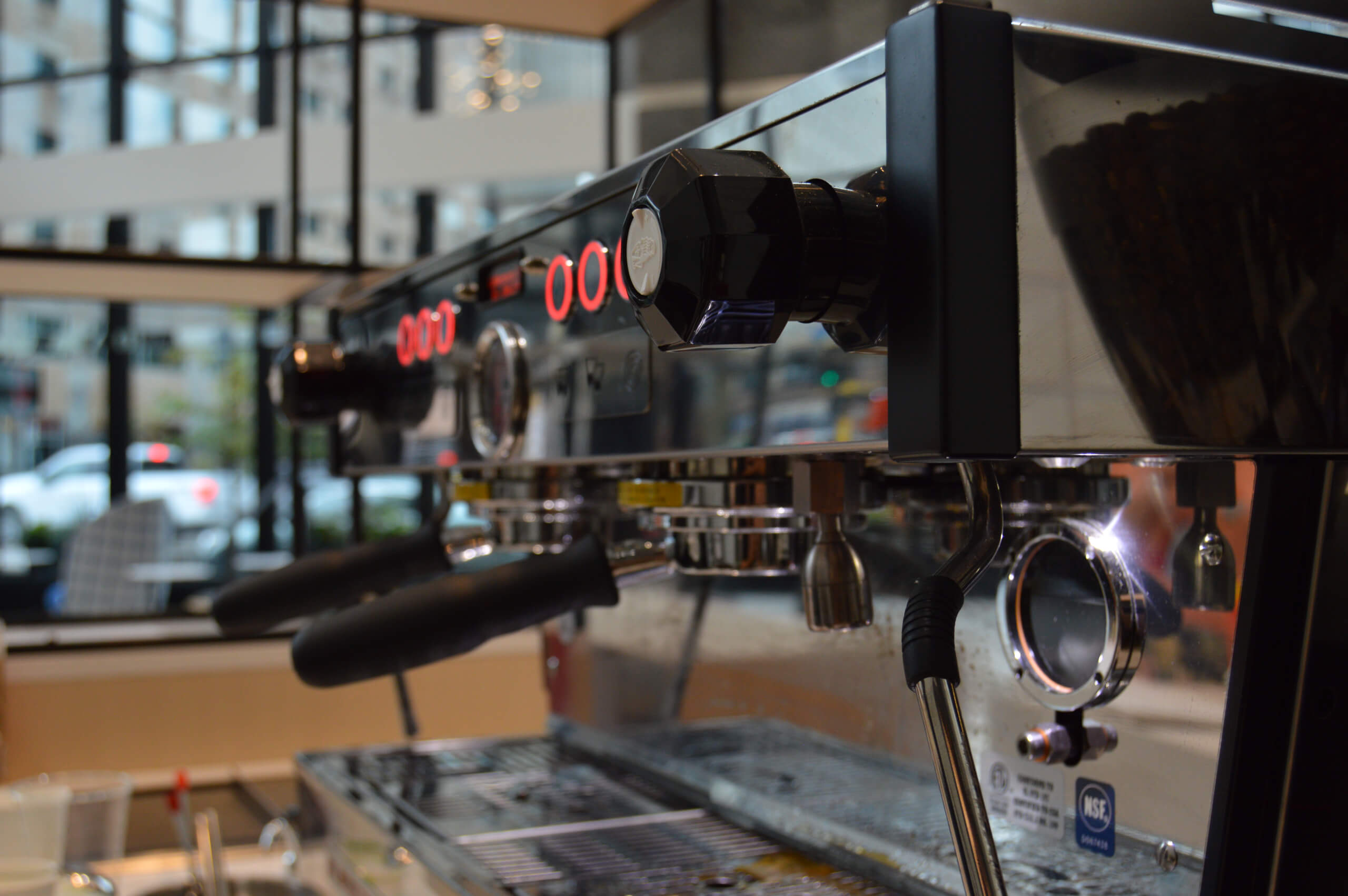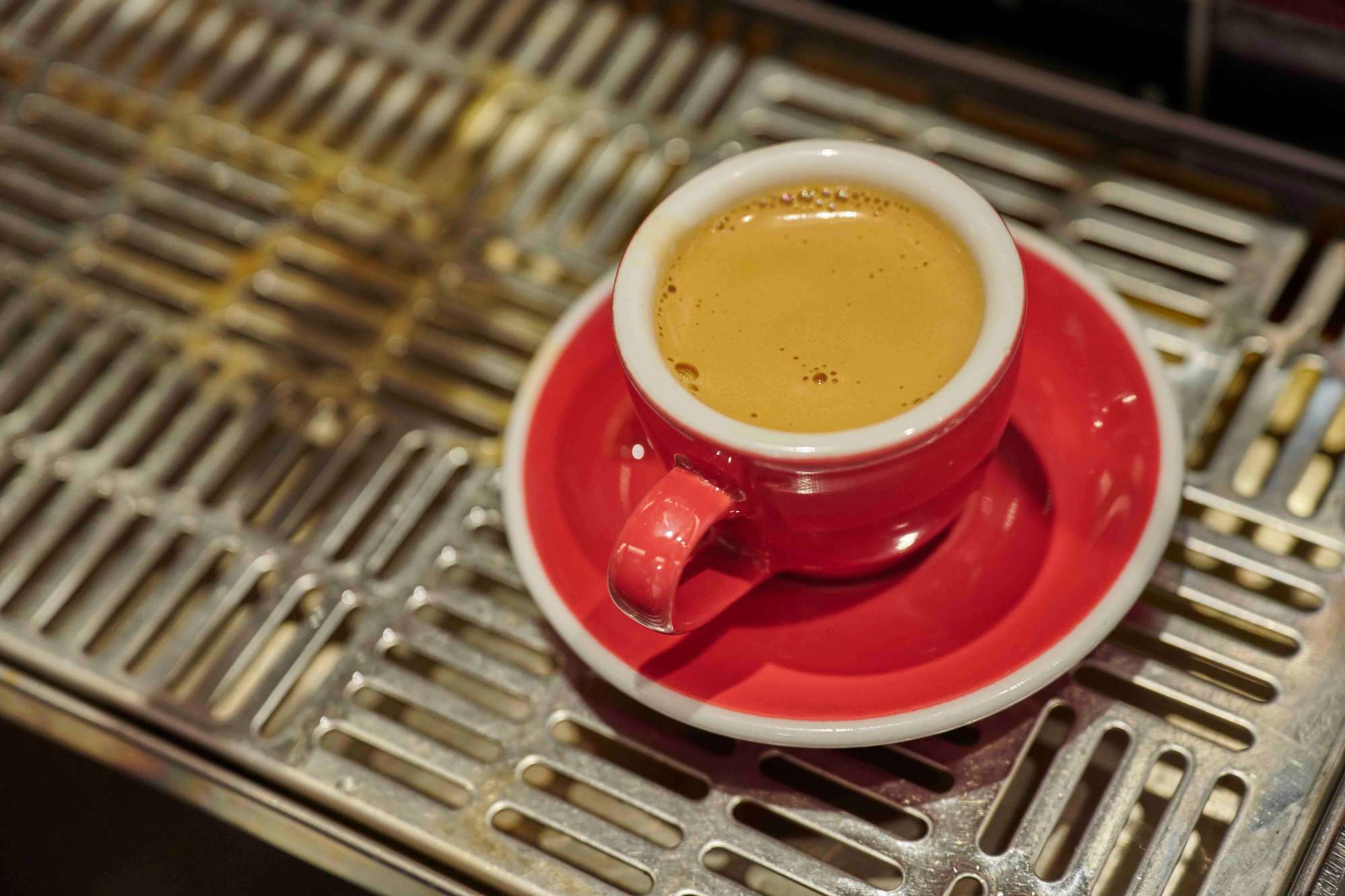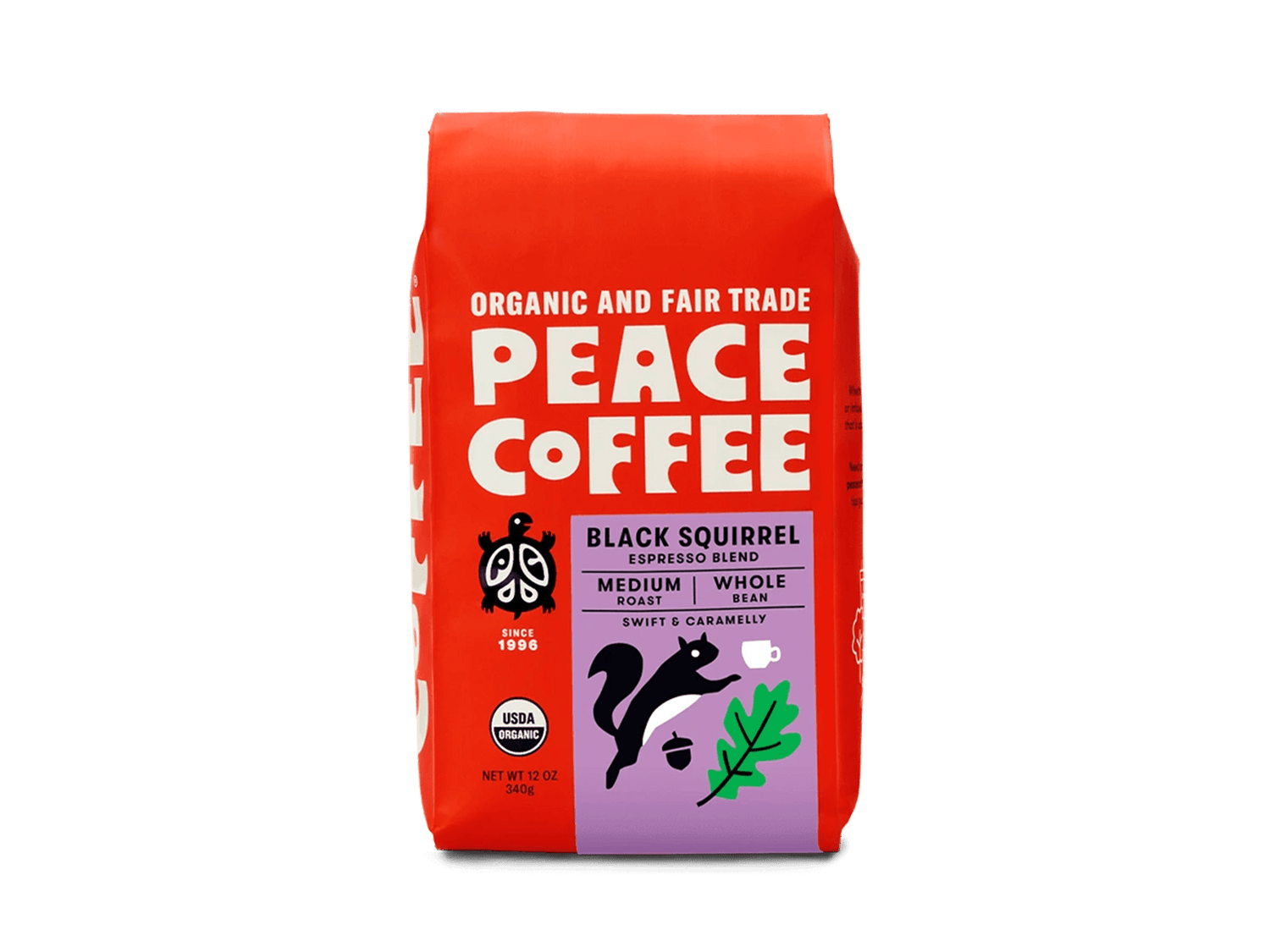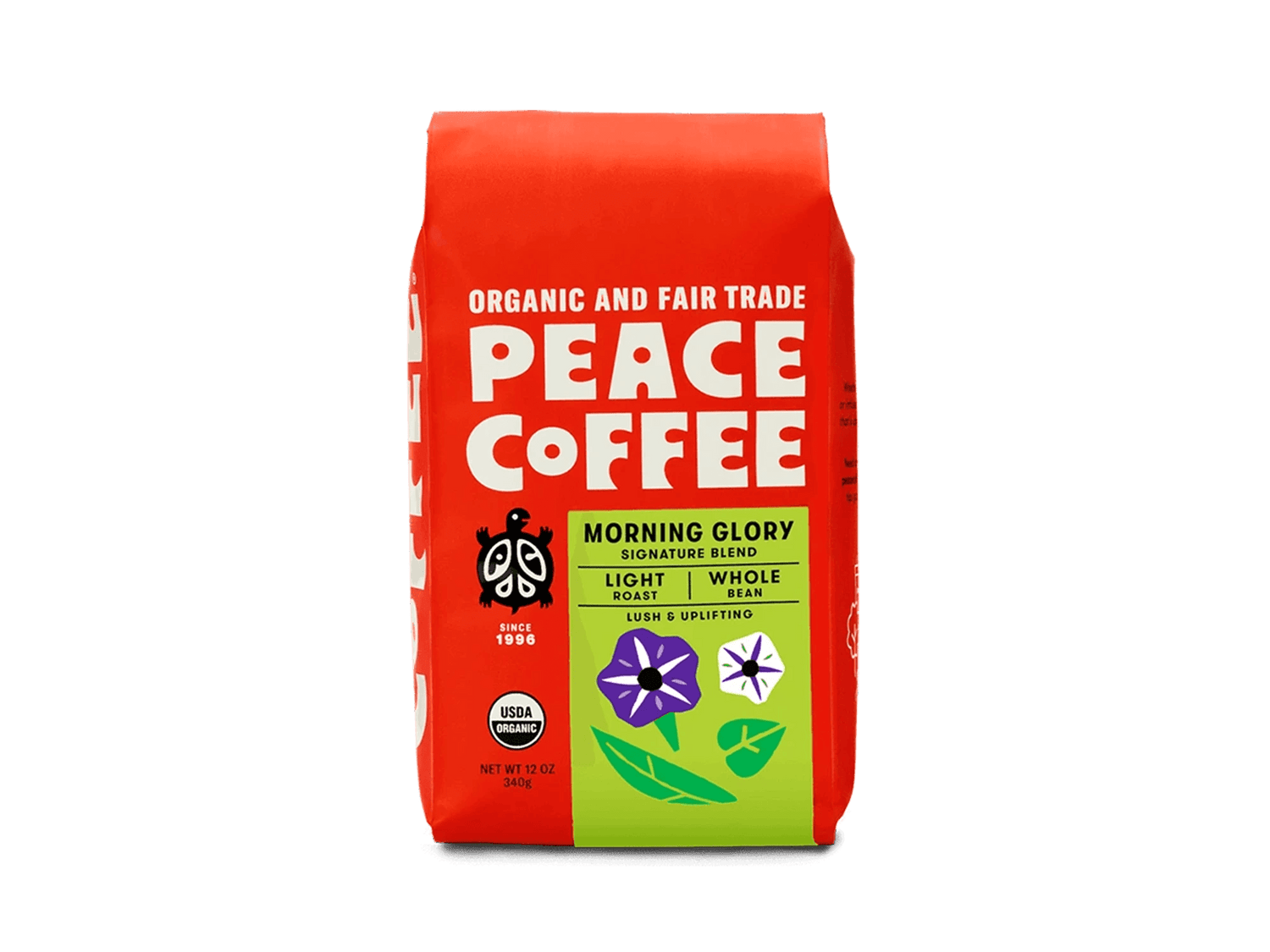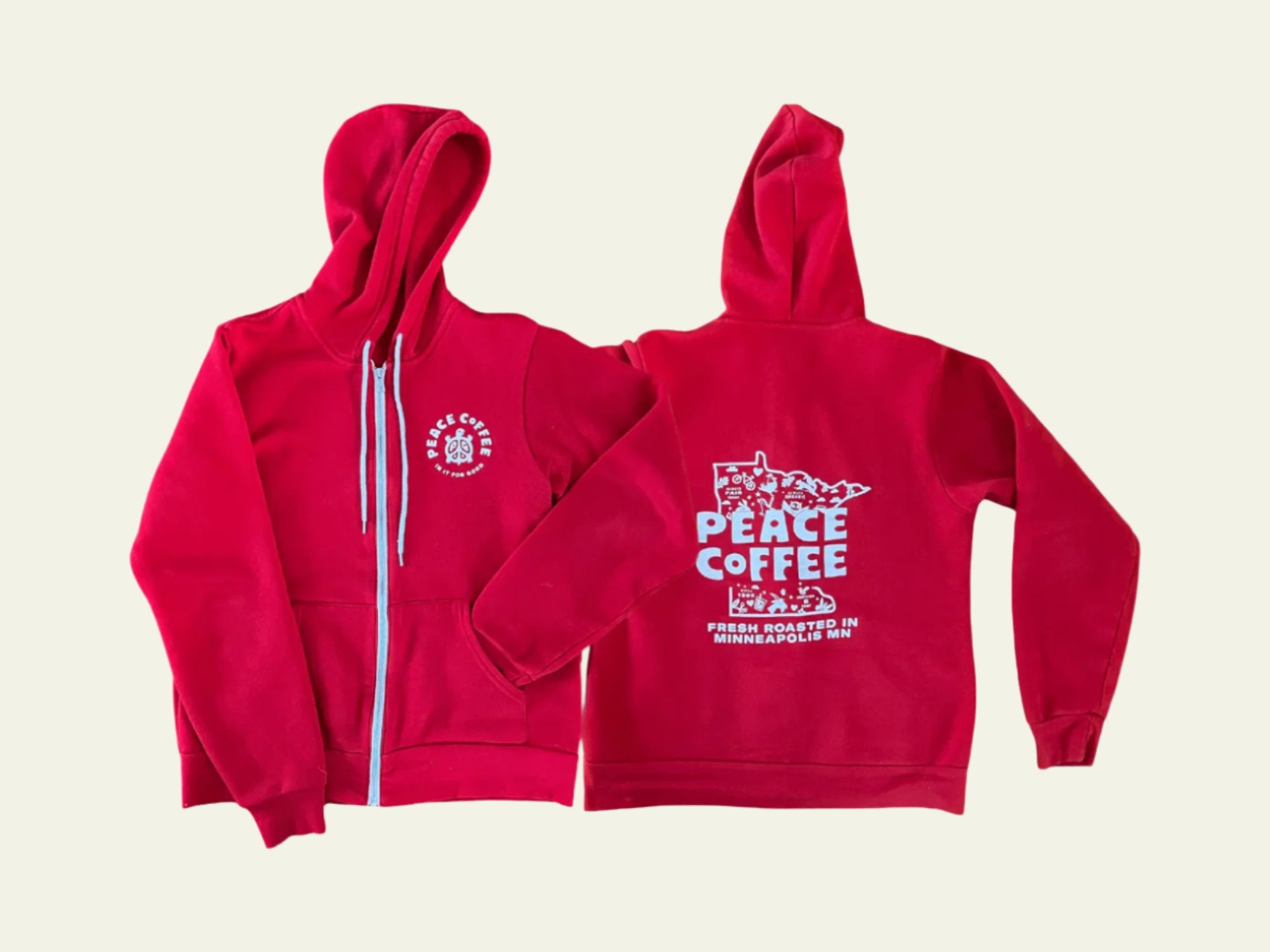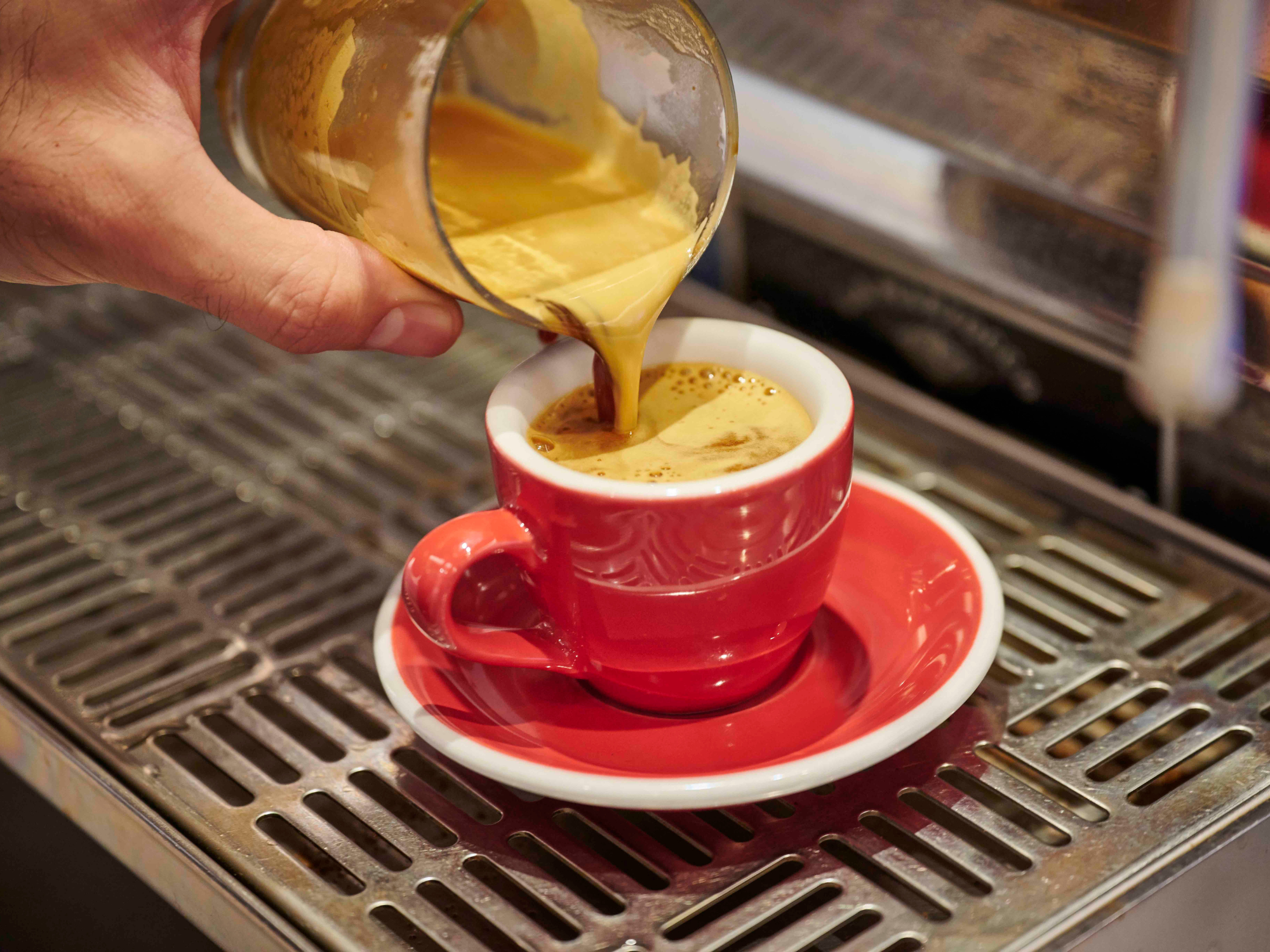
Espresso
Making espresso at home is a weird proposition. It’s inherently a process built around large scales and repeatability, like an auto assembly line, and while technically it’s possible to assemble a Ford Fusion in your garage, why would anyone want to?
At the same time though, there’s nothing quite like an espresso or an espresso drink from a cafe. No amount of finagling will turn something that comes out of a drip brewer into the same rich and syrupy experience as an espresso shot, and nothing quite like a proper espresso marries with foamy textured hot milk to create a cappuccino or latte. While there is no shortage of places to get an excellent Peace Coffee espresso drink out there, we, as Minnesotans understand that sometimes you just don’t want to leave the house. Sometimes it’s because of a polar vortex and sometimes it’s because the act of putting on real pants can just seem daunting. So here’s what to know when you’re pondering a home espresso journey.
What You Need
When we talk about a home espresso setup, there are three main components to consider: the actual espresso brewer, the steam wand/frothing device, and the grinder. Each of these three things act pretty independently of each other, but all of them come together to create the beverages we get in the cafe, so it’s worth knowing what we’re talking about with respect to each of them.
Espresso is defined as a 25-35ml beverage prepared from 7-9 grams of coffee through which clean water of 92°-95°C has been forced at 9-10 atmospheres of pressure, and where the grind of the coffee is such that the brewing ‘flow’ time is approximately 20-30 seconds. In order to create true espresso, your machine needs to be able to heat water to 92° – 95° C (around 200°F), and push it at 9-10 atmospheres, and your grinder needs to grind fine enough (and just as importantly, precisely enough) that the resistance from the grind produces a 30 mL beverage in 20-30 seconds.
In addition, to create the kind of silky smooth but still thick and full milk foam that tops our espresso drinks in the cafés, you need steam that’s being held at 120°C and at 1-1.5 atmospheres of pressure. As of this writing, the most inexpensive option for a machine and grinder that’s capable of doing all of these things comes to about a $1000 price tag, and this is for a particularly non-user-friendly machine. Not everyone needs this absolute level of quality though, so let’s go through all the aspects of various machines to find what might work for everyone’s skill level and budget.
Non-Electric Machines
Some excellent beverages can be made that will make for a good espresso or pseudo-espresso experience on the relatively cheap if one is willing to expend a little bit of elbow grease and do the work yourself of heating and pressurizing the water rather than letting a machine do it. The classic “stovetop espresso machine” is the Bialetti Moka pot. This uses the pressure of evaporating water vapor to press the water through the puck of coffee in the center of the pot. When used well and dialed in properly it will make a delightful stronger-than-drip kinda-sorta-espresso-like drink that works beautifully to make a cafe latte in one’s home.
Another wonderful little device is the Aeropress, which uses pressure from a piston pressed by the user to create the pressure to create a tiny and concentrated coffee shot. Again, it can’t make true espresso, but it makes something espresso-like that can be cut with milk for a cafe-like experience.
There also exist out there gizmos like the Nomad and the Flair that promise to make proper espresso without any electricity, and while their science is sound, no one at Peace Coffee has any direct experience with them and can’t comment directly on their effectiveness. An excellent companion to any of these is the Bellman stovetop steamer, which is effectively a tiny little pressure cooker with a steam wand attached, which frankly does an amazing job of making cafe-quality steam to heat and texture milk for what a little and inexpensive machine it is.
Steam Driven Espresso Machines
The earliest machines for espresso coffee from the early 1900s had a single boiler that was filled partially with water and heated to temperatures well beyond boiling. The pressure that resulted from the steam at the top of the boiler being built up would push the superheated water through a puck of coffee to brew it faster than any existing method. The problem is that superheated water is going to always extract some super bitter and dry components of the coffee, no matter how well every other aspect of the coffee is prepared.
No professional espresso machines use steam driven pressure to brew espresso anymore, but some home machines like the Capresso Steam PRO and the Mr Coffee ECM-160 still do as it’s the most inexpensive way to build a pressurized hot water system, but they’re probably the worst way to brew espresso. Steam driven machines produce bitter coffee slowly, messily, and inconveniently. That being said, among electric espresso machines they are definitely the least expensive kind you can get, so if you need something espresso-ish right now, don’t have much to spend, and need something electric rather than manual, this is your option.
Dual Temp Pressurized Portafilter Machines
The most inexpensive and user-friendly machines that are a good entry-level to home espresso making are machines that use a vibratory pump to pressurize the water flowing through the coffee and have multiple temperature settings, one for brewing coffee and one for steaming milk. The less-expensive pumps in these machines aren’t as accurate as professional ones which use a combination of consistent pump pressure and very finely and consistently ground coffee to achieve a consistent brew time and thus a consistent cup.
To make up for it, these machines will have a gizmo called a “pressurized portafilter”, which has a tiny aperture in it to slow the flow rate of the coffee down to produce a consistent cup. Pressurized portafilters don’t produce as smooth and velvety an espresso as a traditional portafilter but they taste far better than steam driven espresso and are far easier to use than a traditional portafilter. These machines use a single boiler for both steam and coffee, which means you can’t make espresso and steam milk at the same time, you either need to wait for the boiler to heat up to steam milk, or for it to cool down to make espresso, so these machines aren’t for those in a hurry if you want to make espresso and milk drinks.
An entry-level Dual Temp machine would be something like the Capresso EC Pro, which will absolutely get the job done of making a tasty latte or two on a snowed-in morning. If you’re looking for a bit more temperature accuracy and a bit more than making one drink at a time, the Breville Dual-Temp Pro is a nice upgrade for the same type of espresso machine.
Thermoblocks & Standard Portafilters
If you’re looking to be able to steam milk and produce espresso at the same time but don’t want to drop a whole lot more money on a machine than a dual-temp machine, an option would be a machine with a thermoblock in it. Thermoblocks superheat tiny amounts of water so that your boiler can stay comfortably in the 200° range, perfect for brewing coffee, while also superheating small amounts for steam for heating and texturing milk. Thermoblocks are handy because as the end user you can start extracting your espresso, start steaming your milk, and have both ready and fresh at roughly the same time. Thermoblock steam however isn’t as high pressure as the steam coming off a dedicated boiler, so the milk bubble structure isn’t nearly as fine as that off a professional machine. If a dealbreaker is the ability to pour latte art, a thermoblock machine isn’t for you. Machines that are nice enough to have thermoblocks also typically have accurate enough pumps that the home barista is able to use a standard portafilter rather than a pressurized one.
Standard portafilters rely on consistent and well packed grounds of coffee for the bed resistance to allow for proper flow rate, so they have a steeper learning curve than nonpressurized ones, but for the true espresso fiend who craves the rich and velvety full body of a proper café espresso there’s no substitute for the quality. As an end-user, you can see if a machine has the ability to make coffee with a standard portafilter because it will have a pump pressure gauge on the machine. The Breville Infuser is a marvelous machine for the average quality-focussed user, and if you’re looking for something that uses professional level parts and has a handful more bells and whistles, The Crossland CC1 packs a lot of features into a small box.
Heat Exchangers and Dual Boilers
To have a machine that can steam milk and make espresso at the same time and can also achieve the high pressure steam needed to create latte art an espresso machine needs either a heat exchanger or multiple boilers. A heat exchanger uses some tubing that runs through the steam boiler in an espresso machine to rapidly heat water from room temperature to water ideal for brewing. Dual boiler machines have dedicated boilers for specifically espresso and steaming milk. Heat exchangers are a little more economical a buildout, but suffer from imprecise brewing temperatures.
Machines with heat exchangers or dual boilers use the same kind of architecture as professional machines, so even with their smaller footprint, they’re excellent in a situation where one needs to crank out a series of drinks or many people all are looking to make espresso drinks in a quick series, so potentially they’re something that might be a good idea for a household with a lot of coffee drinkers or for a small office where café runs have gotten out of hand. The Nuova Simonelli Oscar II is an excellently priced little heat exchanger machine, and the Breville Dual Boiler is frankly an astonishing bargain for a dual boiler machine.
Durability, fixability, and aesthetics
Once you reach the feature level of a dual boiler pump-driven machine, you’re looking at pretty much an identical style machine to a professional level machine, but there are some factors that can still go into a home espresso setup. First, every budding home barista should go into buying an espresso machine knowing that their espresso machine will break. It is not a question of “if” it will break, but “when”. Espresso machines by their nature exist under pressure and stress, so at some point something will go wrong. Generally speaking the pricier the machine the longer it will last, though this isn’t always a hard and fast rule. Machines that use professional parts are not only going to last longer, but will also be easier to fix, either by yourself if you’re handy with a wrench, or by an experienced espresso tech.
Cheaper machines typically have proprietary architecture that can only be fixed by mailing it into a service center, if they can be fixed at all. Also of course what materials the machine is built out of is going to dictate how it looks and feels in your kitchen. Brushed stainless steel construction is much nicer looking and durable than plastic housing but is also substantially more expensive. In addition, fancier machines might have quieter and more reliable rotary vane pumps rather than noisy vibratory pumps.
The gold standard for home espresso is La Marzocco’s GS3 and Linea Mini, built with pro parts that are technician friendly, incredibly reliable electronics, full stainless steel construction, a whisper-quiet rotary vane pump, and if purchased, La Marzocco will match you with a local coffee expert to come to your house and train you in the machine’s use. They also cost about as much as a reliable used car, but if you purchase lattes every day at the local super fancy coffee shop and would switch to using one of these, the machines would effectively pay for themselves after about 5 to 10 years (depending on what kind of coffee you’re brewing and how picky you are about milk choices).
Grinders
Espresso machines make espresso. Grinders make espresso taste good. No matter how you’re making your coffee, a good and reliable grinder is absolutely necessary to get your drinks tasting excellent. Compounding difficulties is that preground espresso really really doesn’t work. Beyond the standard quality argument that people should be grinding coffee fresh all the time, every espresso machine and configuration is slightly different and one kind of preground espresso might not work with your machine, rendering the entire bag useless.
In addition, because espresso is extracted so quickly, the grounds must be of incredibly uniform size in order to extract evenly (as well as providing the necessary bed resistance to get a good flow rate in a non-pressurized portafilter). For this reason, not only are the ubiquitous inexpensive blade grinders useless for espresso, so too are the more inexpensively priced burr grinders out on the market, as these will crush the beans into many different non uniform sizes and make for a poor espresso extraction.
The most inexpensive grinder on the market that can achieve as fine and uniform a grind size to make espresso is the Capresso Infinity, but with only 16 points of articulation you may find one setting too coarse, and its neighboring setting too fine. In addition, its burrs wear out quickly. The Baratza Virtuoso makes for a pretty good all-around grinder if you’re looking to make espresso and other types of filter coffee as well. If you’re looking to really hone in on excellently made espresso though, a dedicated espresso-only grinder is truly the way to go. The Baratza Sette 270 Wi delivers an impressive level of features (such as a built-in scale and 270 points of articulation) but can only handle a few espressos a day being ground through it, while the Rancilio Rocky SD will both deliver on the accuracy of the dial and can make shot after shot super reliably.
Super Automatics
All the machinery mentioned so far has been some kind of manual machinery. No matter what else it is still on a human operator to pack coffee into the portafilter, switch on the pump to extract the espresso, and run the steam wand to texture and heat milk by hand. There exists however a number of machines that will do these steps for you, which are colloquially known as “super autos” in the industry. These machines have series of pistons, chutes, valves, and sensors to do all the extracting and heating for you so you don’t have to. The thing to know about super-autos is 1) automation always makes things more expensive, and 2) no matter how well engineered the machine is it will need to be calibrated on a regular basis.
There is no such thing as a true “set it and forget it” machine. With any of these machines the more well-engineered the parts the better the espresso that’s going to come out of it, but also the price tag will climb ever higher. Generally speaking for the convenience of automation one can expect a similar level of quality out of a super auto as from a manual machine that costs half as much. So a machine like the Saeco Incanto will give you a quality similar to the dual-temp pressurized portafilter machines mentioned above, while the Breville Oracle Touch will automate the functions of the Breville Dual-Boiler mentioned above.
Accessories
There are all kinds of tiny little extra costs that come around with an espresso setup, so it’s good to plan for these as well. If you’re making milk drinks it’s good to steam your milk in a dedicated stainless steel steaming pitcher. Yes, a plastic measuring cup will work, but you can’t pour latte art with it; it’s way more difficult to tell its temperature, and it just doesn’t look cool. If you’re getting a machine with a traditional portafilter, you’ll need a tamp to go with it. Be sure to get one that will fit your portafilter and has some heft to it.
Plastic tamps aren’t worth the space they take up. Aluminum tamps are okay, but steel tamps are marvelous. You’ll want a knock box to get rid of your spent espressos. You’ll want some extra kitchen towels to wipe off your portafilter and steam wand after use. If you’re concerned with accuracy of extraction you’ll want a scale to measure your in and out weights, or at least a measuring glass.
You’ll want a brush to brush up the coffee grounds that inevitably get everywhere. You’ll definitely want some cleaning supplies to clean the interiors of your espresso machine and grinder to keep them working nicely. And of course, you’ll want a nice mug to drink your drinks out of.
Plastic tamps aren’t worth the space they take up. Aluminum tamps are okay, but steel tamps are marvelous. You’ll want a knock box to get rid of your spent espressos. You’ll want some extra kitchen towels to wipe off your portafilter and steam wand after use. If you’re concerned with accuracy of extraction you’ll want a scale to measure your in and out weights, or at least a measuring glass.
You’ll want a brush to brush up the coffee grounds that inevitably get everywhere. You’ll definitely want some cleaning supplies to clean the interiors of your espresso machine and grinder to keep them working nicely. And of course, you’ll want a nice mug to drink your drinks out of. , style, or even provide a review.

